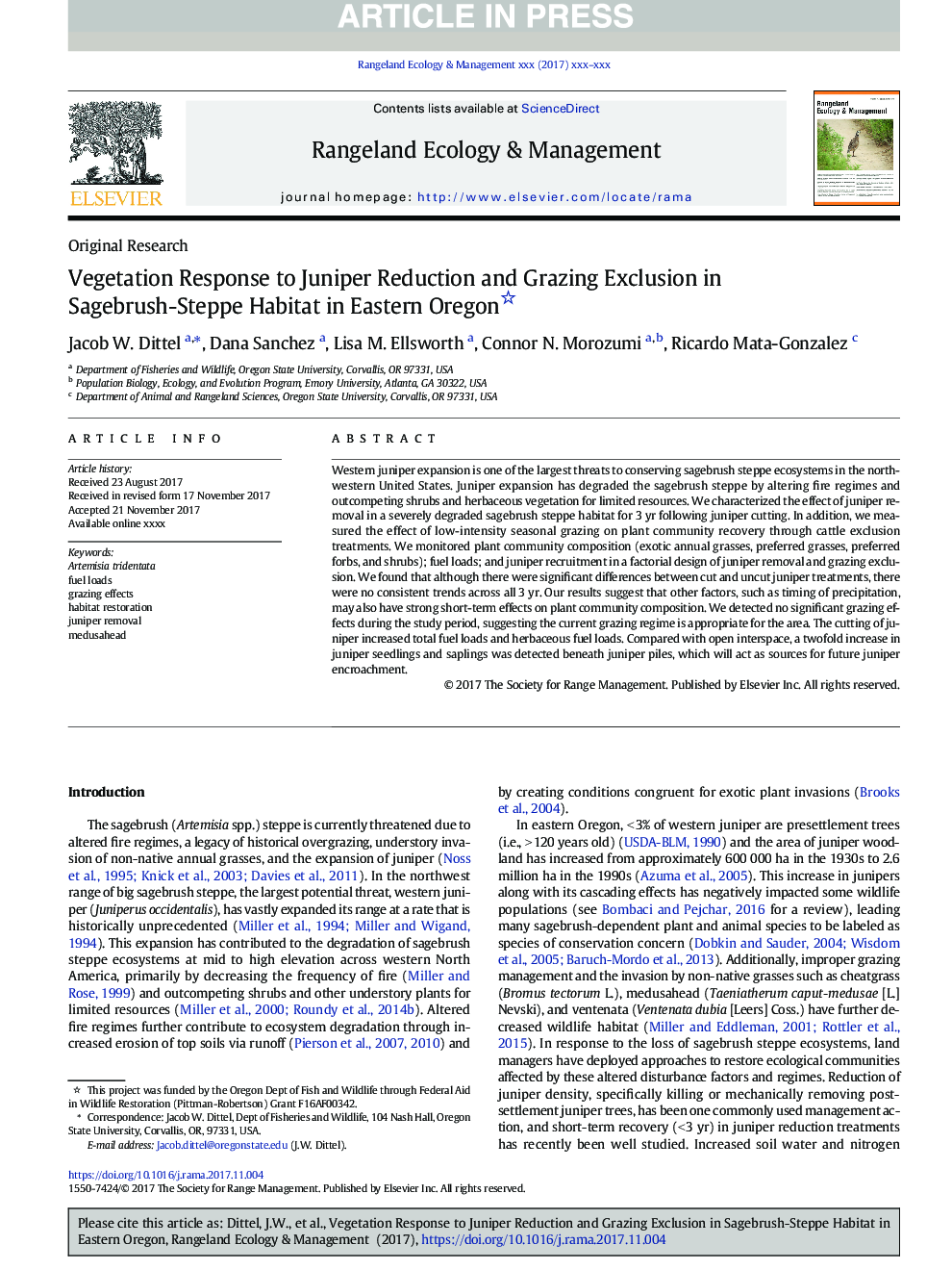| Article ID | Journal | Published Year | Pages | File Type |
|---|---|---|---|---|
| 8849628 | Rangeland Ecology & Management | 2018 | 7 Pages |
Abstract
Western juniper expansion is one of the largest threats to conserving sagebrush steppe ecosystems in the northwestern United States. Juniper expansion has degraded the sagebrush steppe by altering fire regimes and outcompeting shrubs and herbaceous vegetation for limited resources. We characterized the effect of juniper removal in a severely degraded sagebrush steppe habitat for 3 yr following juniper cutting. In addition, we measured the effect of low-intensity seasonal grazing on plant community recovery through cattle exclusion treatments. We monitored plant community composition (exotic annual grasses, preferred grasses, preferred forbs, and shrubs); fuel loads; and juniper recruitment in a factorial design of juniper removal and grazing exclusion. We found that although there were significant differences between cut and uncut juniper treatments, there were no consistent trends across all 3 yr. Our results suggest that other factors, such as timing of precipitation, may also have strong short-term effects on plant community composition. We detected no significant grazing effects during the study period, suggesting the current grazing regime is appropriate for the area. The cutting of juniper increased total fuel loads and herbaceous fuel loads. Compared with open interspace, a twofold increase in juniper seedlings and saplings was detected beneath juniper piles, which will act as sources for future juniper encroachment.
Related Topics
Life Sciences
Agricultural and Biological Sciences
Agricultural and Biological Sciences (General)
Authors
Jacob W. Dittel, Dana Sanchez, Lisa M. Ellsworth, Connor N. Morozumi, Ricardo Mata-Gonzalez,
